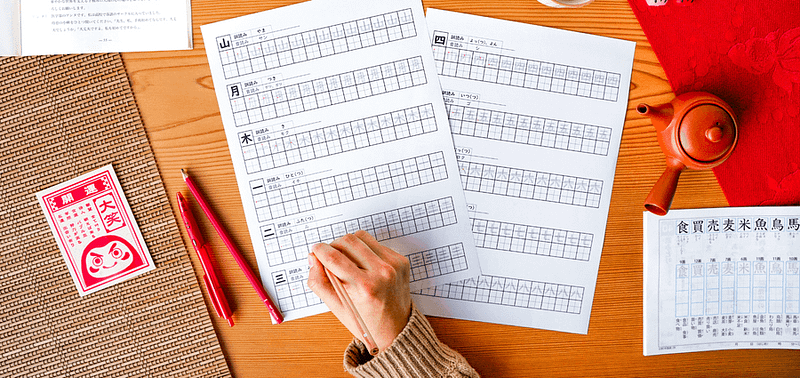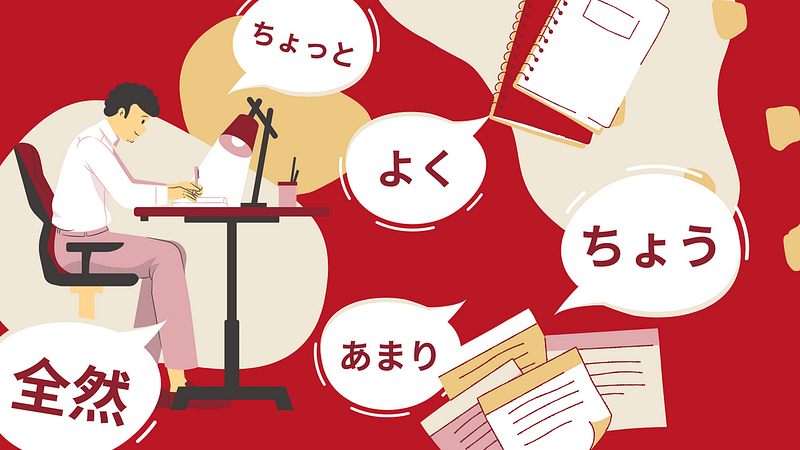Are you perhaps studying Japanese? Or maybe plan to study Japanese, and want to know what to expect on the journey ahead? I’m going to share my experiences and thoughts on being “fluent” in Japanese. I will also discuss what fluency means and share my personal tips and tricks to becoming fluent in Japanese and improving Japanese language learning as efficiently as possible.
But before we get to it. Who am I? Well, I’m Akseli, a blog writer at Go! Go! Nihon. I come from Sweden and earlier lived in Japan for four years. I have been studying the Japanese language the majority of my adult life. Ever since childhood I’ve been interested in Japan and Japanese culture. Alright, that’s my self-biography. Let’s get on with the topic!
How long does it take to become fluent in Japanese? What is fluency?
So, in order to answer the question of how long does it take to become fluent in Japanese, we need to specify what fluency really means. I would argue that there are different degrees of fluency. Let’s simplify by calling them “small-talk fluency” and “native fluency”.
I started hearing after six months in Japan that I was “fluent” in Japanese because I could express my mind and hold a normal conversation going with natural intonation and speed. Was I fluent? Well, the term I was flattered with was the word ペラペラ (perapera), which is an onomatopoeic word with the meaning of “flowing unobstructed” or “fluent”. In that sense I was sort of fluent, but in truth, I was mostly using the same vocabulary and rambling the same conversations such as ordering food, asking for directions, small talking with strangers and so on. Indeed, I was “small-talk fluent” but as soon as I was thrown out of my comfort zone and asked what I think about topics such as global warming or politics, I found myself hesitating and stuttering.

In order to reach native fluency, e.g. being able to without effort, understand and express yourself naturally both orally and in text, regardless of the topic, requires a considerable amount of time studying. How long it takes is hard to define as it’s both highly individual and depends on how high you or the person who is judging your Japanese sets the bar. Personally, I would argue that you have more or less reached “native fluency” when you can make a phone call, have a deep discussion about anything that’s not small-talk, and the person on the other side can’t tell whether you are a native Japanese or not. Or, if they can tell, it doesn’t impact significantly on the conversation.
Another interesting definition of fluency I once heard is that you are fluent once you can fiercely fight and argue in that language. (Don’t go picking fights with strangers to see if you’re Japanese is fluent or not!)
According to my experiences, to reach that level of fluency requires a minimum of three years of full-time studies and continuous usage of the Japanese language in your private life. So, how do you achieve this goal as efficiently as possible? Next, I want to provide some tips and tricks about how to most efficiently reach “small-talk fluency” and “native fluency”.

Tip 1: Find Japanese friends
Finding Japanese friends that you can interact with online and in person is important to improve your fluency. However, many would have you think that making true Japanese friends is hard. I don’t share this view at all. It really depends on your expectations and how you approach the issue. To up your chances of encounters that can lead to potentially life-long friendships with Japanese people I recommend putting yourself in an environment where making friends occurs naturally. Some examples of this are:
- Speak Japanese (even if it’s not great yet). I find that it’s much easier to connect with Japanese people if you speak Japanese to them. The benefits from this only grow the better your Japanese becomes!
- Live in a share house. Share houses are great because you share the common spaces with Japanese people and get a chance to know them better. You also find yourself in many situations where you naturally need to hold a conversation in Japanese.
- Tag along with a friend who already has Japanese friends. The key to expanding your network of connections is to find an entry point. Get yourself invited to a party or such and see what happens!
Tip 2. Speak up and don’t be afraid to make mistakes
It’s natural to not want to talk unless you can formulate yourself perfectly. I want to suggest, be a daredevil, speak up and embrace those awkward moments where you initiate a conversation, but can’t follow up. That is the moment when the most learning occurs.
Learn more tips on how to speak more Japanese here.
Tip 3. Simulate conversations in your head
For new learners, it is also a good idea to make a habit of simulating common everyday conversations during your off-time (when walking to school, sitting on the train etc.). For example, daydream a situation where your friend asks you something, and think about what you would answer. This will prepare you for when those situations do occur later on.
Tip 4. Engulf yourself in different social situations and media
I like to think that every field has a different set of commonly used terminology. The idea is that to reach native fluency, you need to be proficient in as many of these fields as possible. For example, at work you may use one set of formal Japanese. At the local bar you’re bound to use a totally different set of vocabulary. When watching anime, you also find certain terms rarely used elsewhere, even when going camping you have the opportunity to learn camping related words. Try and break your daily routines and try out things you don’t normally do, as this will create opportunities to learn new vocabulary (and expand your horizons in general).

Tip 5. Immerse yourself in the Japanese language
A lot of learning occurs subconsciously as well. Therefore, it is helpful to create an environment where you encounter as much Japanese as possible. If you are into Netflix, try putting on Japanese subtitles. If you are into gaming, try playing in Japanese instead (you can easily change languages on Nintendo Switch, for example). Change your computer settings to Japanese.
Try to include the Japanese language in your hobbies as much as possible and immerse yourself by changing your environment to include the Japanese language as much as possible. Just don’t forget that it’s not supposed to feel like work, it’s supposed to be fun!
Learn more about learning through immersion in our article.
Tip 6. Make a habit of looking up unfamiliar words.
My final tip is a straightforward one, but also very important. Whenever you encounter words unfamiliar to you, make a habit of looking them up in a digital dictionary. Also preferably use a dictionary which can one-click export words straight into a flash card app like Anki. Takoboto for Android is a good example of this. You can then study the words you want during your off-time.
That’s it for this time! Do you agree with the definitions of fluency and the tips and tricks shared in the article? Comment below!
Follow our blog for more interesting articles on learning Japanese.















